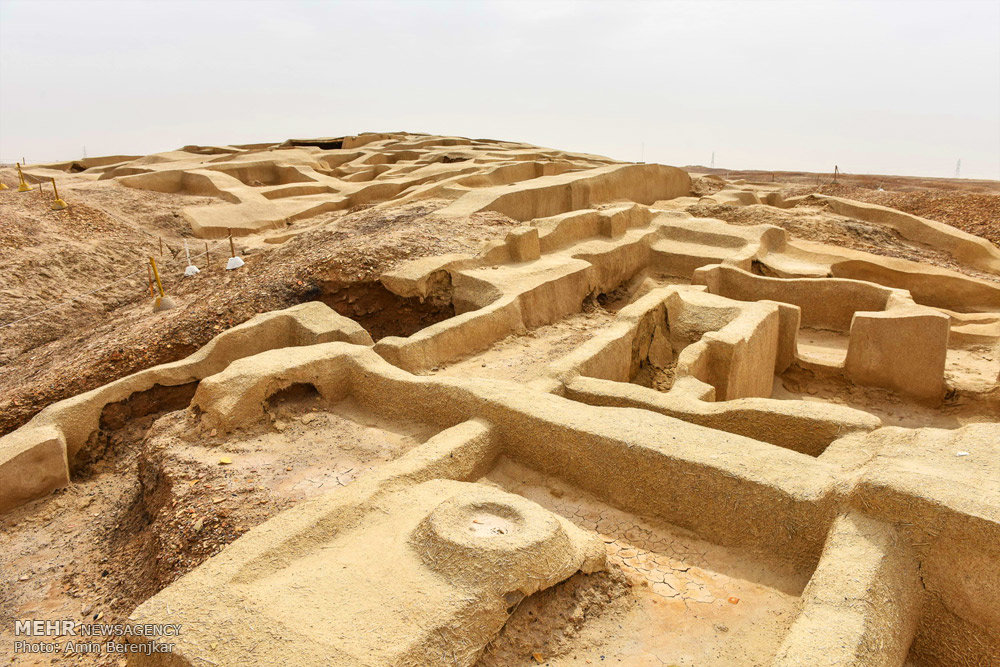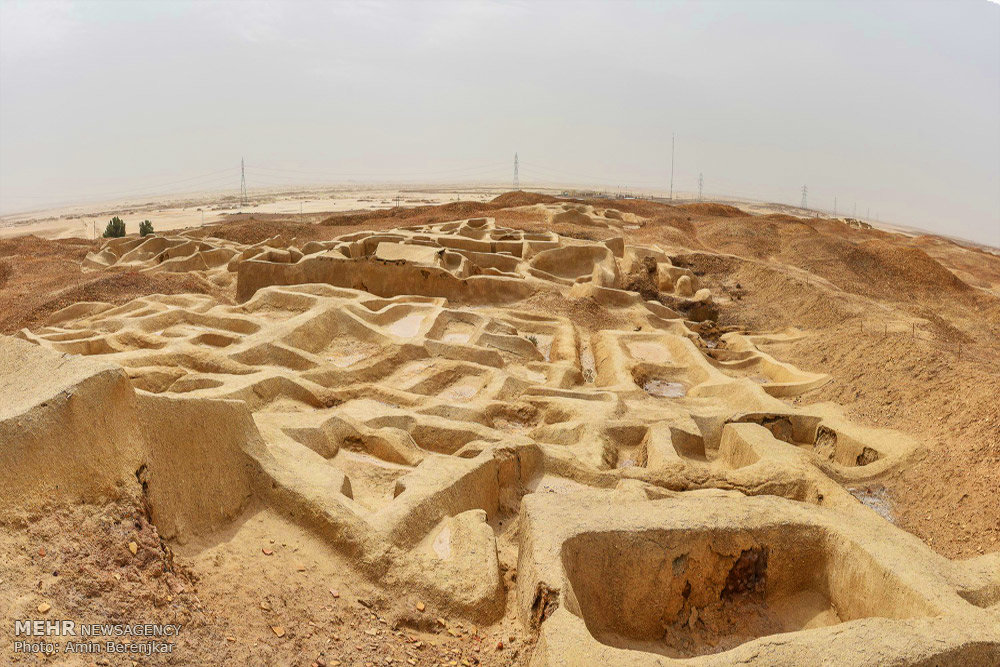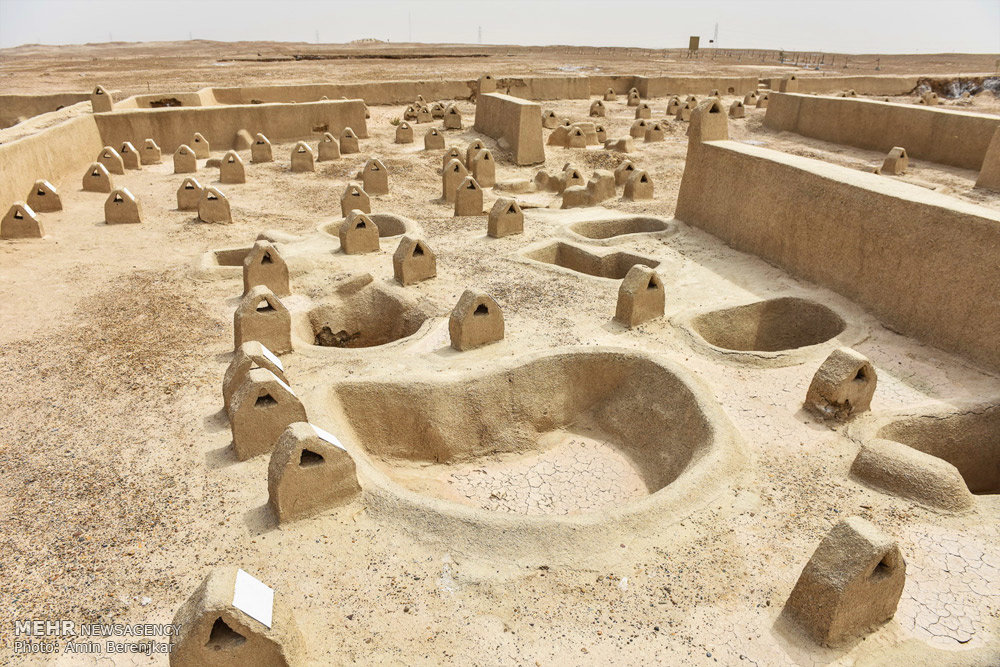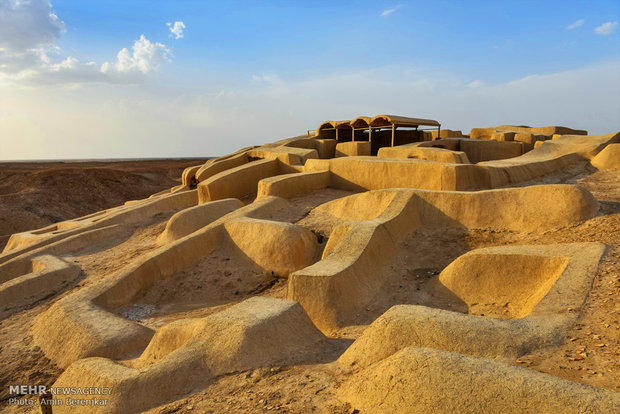Ranked among the most ancient countries of the world, Iran is house to numerous old, mysterious and peculiar civilizations. Sistan and Baluchistan Province is an old province in Iran. It has many monuments including Shahr-e Sukhteh.
The civilization of Shahr-e Sukhteh is one of the wonders of the ancient world. The archeological findings in this area testify to the emergence of the first human settlements in eastern Iran. Shahr-e Sukhteh, meaning burnt city, which dates back to more than 5000 years ago, is one of the heritages of Iran. It is located near Zabol road to Zahedan in Sistan and Baluchistan Province, southeast of Iran. The city was built in 3200 B.C and people were living in four eras between 3200-1800 B.C.

The total area of the city is 280 hectares and is divided into residential, central and industrial area, as well as cemetery and monuments. The residential area of the city is 80 hectares where people lived in this part at that time.
It is built in a completely non-earthquake zone and during the history, it was completely burnt 3 times before being abandoned in 1800 BCE. Once in the initial level of its growth and the other times are at the moment of its destruction. However, in 2100 BC, the city was suddenly evacuated without any signs.

The site was discovered and investigated by Aurel Stein in the early 1900s. It was excavated in 1967, and has been under constant exploration by Italian and Iranian archaeologists until the 1970s. Shahr-e Sukhteh remained under a 20-centimeter thick layer of ash and dust for around 4000 years before being discovered. The dry desert climate of the region also helped to preserve the remaining of this civilization.
It is not only the extent of this city that has made Shahr-e Sukhteh as one of the largest ancient cities in Iran and the Middle East. The discoveries demonstrate a great deal of development and advancement of these civilizations which sound really incredible.

There were various industries such as textile, masonry, jewelry, etc. in this city which made it one of the most advanced cities in the world. 12 kinds of fabric are found among the ruins of the Shahr-e Sukhteh that indicate the textile industry of the city.
The world’s first known artificial eyeball, with 2 holes in both sides and a golden thread to hold it in place, has been unearthed from the skeleton of a woman’s body in Shahr-e Sukhteh.

One of the most wonderful things which discovered in this city is the oldest signs of brain surgery. The skeleton of a 14-years-old girl was discovered in the graveyard of this city which shows that doctors did a brain surgery for her 4800 years ago.
A 10-centimeter (3.937-inch) ruler, accurate to half a millimeter has been found in Shahr-e Sukhteh which means people who lived in this city had a lot of developments in mathematics.

There was a well-managed pottery system in the city for water supply and sewage. It is interesting to know that the people of Shahr-e Sukhteh played with backgammon in that period.
Around 21000 graves have been discovered in the west and south part of the city and analyzing the remains of the dead bodies has led to very unique and absorbing findings. One of the biggest skeletons of the world has been unearthed here with 5 meter and 21 centimeter height which belongs to a 35 to 40-year old man.

During the archaeological excavations at Shahr-e Sukhteh in 1970s was found a pottery vessel which has pattern of a goat and tree on it. The artifact bears five images depicting a wild goat jumping up to eat the leaves of a tree. When the vessel is twisted you can see the images merge and make a “bounce back” animation telling the story of the goat eating from a tree. This also means that the world oldest cartoon character is a goat.
Shahr-e Sukhteh is one of the UNESCO’s world heritage centers in this region which is associated with Jiroft culture, one of the oldest civilizations on earth along with Helmand culture. It was registered in the UNESCO World Heritage List in June 2014.
The best time to visit Shahr-e Sukhteh is in winter and spring and visiting this palce will take one hour to one day.
ZZ/



























Your Comment